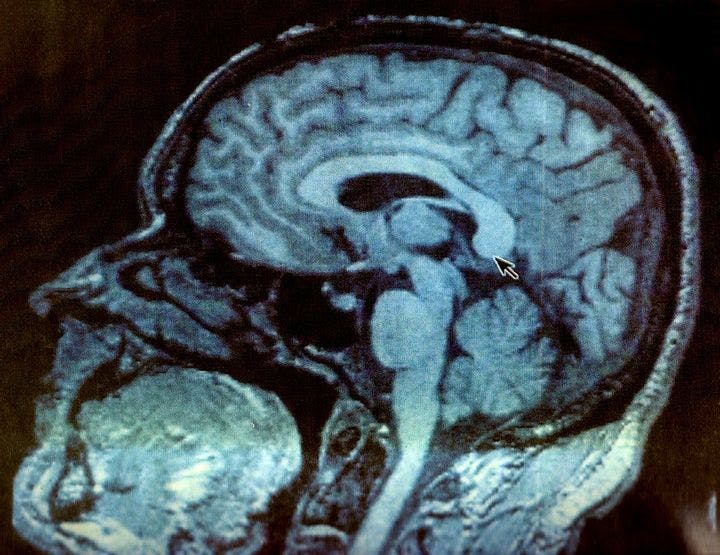Spring 2009
The Bulging Brain
– The Wilson Quarterly
The shape of the brain may be critical to the causes of such mental disorders as schizophrenia and autism.
Every time you read an In Essence article, responding to it by saying “hmmm,” getting mad at the author, or even flipping the page, you are exercising your cerebral cortex, which is about as thick as a piece of cardboard and as big as an extra-large pizza. The cortex fits in your skull because it folds up into consistent patterns of bulges and valleys. The geography of the brain has been studied for hundreds of years. A pseudoscience called phrenology once did considerable harm to people whose brain and, particularly, skull measurements were judged to be savage. But Claus C. Hilgetag, a neuroscientist at Jacobs University Bremen, and Helen Barbas, a professor at Boston University, say that the phrenologists may have been on to something. The shape of the brain may be critical to the causes of such mental disorders as schizophrenia and autism.
The cortex of a human fetus starts out smooth, and stays that way for about the first six months of development, according to Hilgetag and Barbas. Fetal neurons send out spindly fibers called axons that become tethered to target neurons in other areas of the cortex. As the cortex expands, the axons tighten up like bungee cords. That’s how bulges are formed, as the two parts of the cortex are pulled together. By the time a baby is born, the brain has become characteristically wrinkled.
Animals lower on the evolutionary chain, such as zebra finches and platypuses, have nearly smooth cortexes. Large-brained mammals such as whales, dogs, and apes have corrugated brains somewhat like those of humans. In Homo sapiens the major convolutions are remarkably regular, but the small folds are so diverse that they differ even in identical twins.
Phrenologists may have been on to something. The shape of the brain may be critical to the causes of such mental disorders as schizophrenia and autism.
The cerebral cortex is crucial to a human’s ability to perceive, think, experience emotion, and act. It’s what people are talking about when they say “gray matter.” There are “clear differences” between the cortical folds of healthy people and those of sufferers from mental disorders such as schizophrenia and autism, the authors write. But the findings are controversial because there’s no uniform pattern to the aberrations. Many scientists now believe that some diseases affect “neural networks” rather than specific areas of the brain.
As with so many other questions involving the brain, scientists are working zealously to understand how neurological diseases with different symptoms might be the result of something that went awry during crucial developmental periods. “The landscape of the brain does correlate with mental function and dysfunction,” Hilgetag and Barbas write. Like the earliest archaeologists, today’s neuroscientists know they have found something important, but are only beginning to investigate exactly what it is. For the moment, even with advanced imaging methods for measuring brains, experts still cannot distinguish between the cortex of a saint and that of a criminal.
* * *
THE SOURCE: “Sculpting the Brain” by Claus C. Hilgetag and Helen Barbas, in Scientific American, Feb. 2009.
Photo courtesy of Flickr/Mikey G. Ottawa
